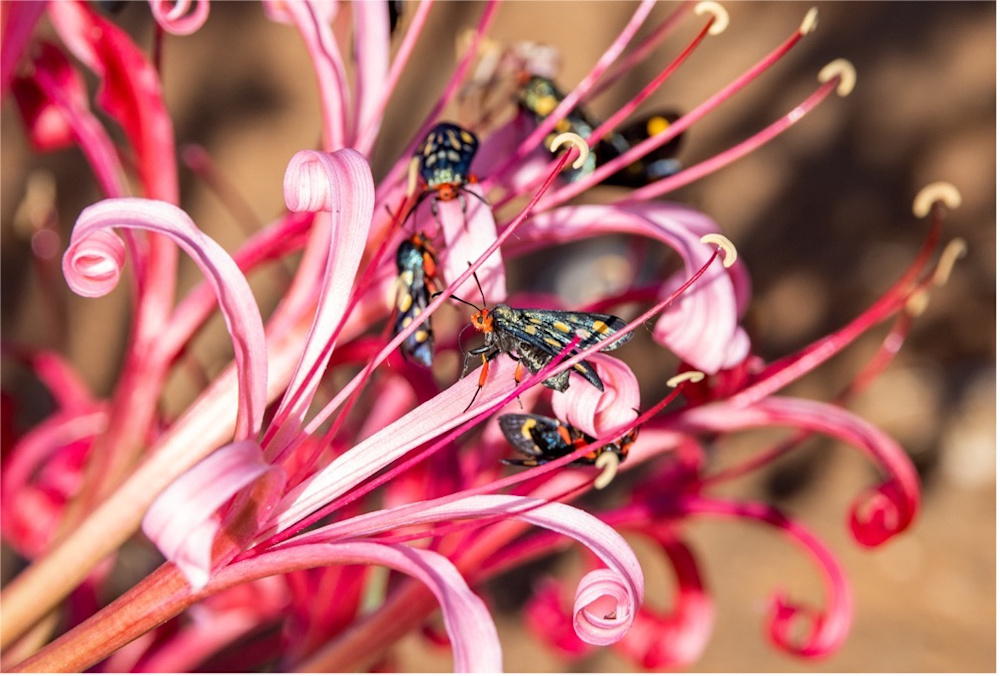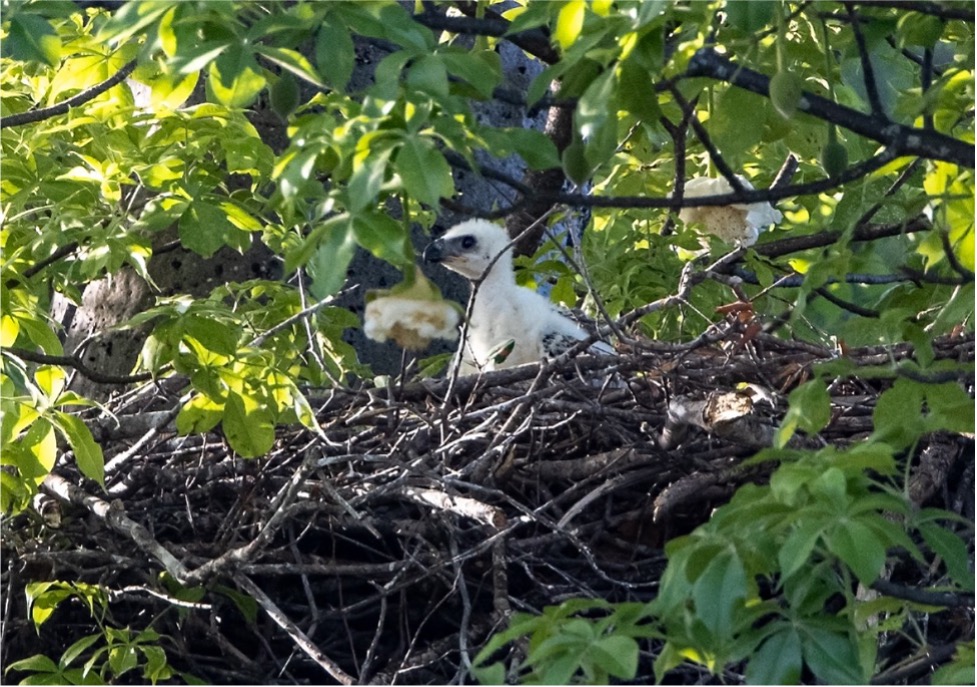November 2024
Singita Pamushana Lodge
Share:
Singita Pamushana Lodge: November 2024
This journal celebrates the unique treasures of November, rather than the typical big, hairy scaries. For many of us it’s our favourite month of the year - an awakening after the first rain of the season, following months of desperate dryness. The trees and bushes burst into shades of emerald, lime and neon green, while the crispiest layer of peppermint covers the ground. Insects, amphibians, birds, and herbivores delight in being alive, filling the air with a constant hum of happiness. In areas the cicadas are so loud they could scramble your brain! Dragonflies dart above every pool of water. Evening frog choirs compete to out-croak one another. The dawn chorus wakes every birder before sunrise to tune in and witness the wooing and peacocking. On 12 November we heard the first call of a woodland kingfisher and now, at month-end, they are duelling with the “Piet-my-vrou” calls of red-chested cuckoos. The palette has changed from muted to vivid, flowers are in bloom, and a seductive gardenia perfume wafts on the soft twilight air.

A sightings snapshot for October follows:
Lions
According to our dedicated Lion Tracking Team, the fluctuating lion prides, as at November 2024, are:
Four prides on the Malilangwe side of the Chiredzi River:
- Nduna Pride: Seven members. Thee territorial males and four females. Males patrol around Banyini, Pamushana, Malevula, Hwata, northern and eastern boundary, Lojaan, Manuchi, but they don’t cross the river. Females stay around Nduna area.
- Nduna Split Pride now called the Northern Pride: Six members. One adult non-territorial male, four females, one sub-adult female. They move over the top two-thirds of the property, but not onto the Hippo Valley side.
- Southern Pride: Four lions - two females and two males.
- Also in the southern area are another two females.
- Non-territorial males: Three young males that roam. Possible challengers in future.
- Non-territorial male: One that roams on his own around Sosigi, Formadhanga, Hwata. Sometimes tries his luck but big males chase him.
Three prides on the Hippo Valley side of the Chiredzi River:
- Hippo Pride: 11 members. There are four cubs. Part of the 11 are two territorial males, and they sometimes join with the prides of three and four. They sometimes cross the river, seen around 02 pan, but not east of Binya.
- Pride of three.
- Pride of four.
Highlights during the month were:
- Nduna Pride: There has been a mating pair within this pride. Let’s see what 110 days bring…
- Southern Pride: Early in November they were seen hunting buffalo, but after the big rains they have evaded detection.
- The non-territorial roaming male on Malilangwe was spotted at night, stalking zebras. He gave chase but narrowly missed catching a foal.
- Hippo Pride: At the start of the month there were five cubs, but now it seems that one is missing, presumed dead.
Leopards
- Beautiful sighting of a male leopard marking territory along the shoreline below Malilangwe House.
- A mother and two cubs were seen south-east of Kwali Camp.
- A relaxed young male leopard was seen sunning himself on the rocks at the junction of Ultimate Drive.
- Alerted by a distressed klipspringer alarm calling, guide and tracker spent time scanning the area. Much to the guests’ delight they found two leopards, a male and a female. The female kept rubbing against the male in a seductive manner, then she picked something from the ground and moved out of view. Further investigation revealed that she had the carcass of a young klipspringer.
Wild dogs
- The large pack are seen in high, fluctuating, numbers. The pups are doing well and are very playful. It is such a delight to see their excitement and clumsy enthusiasm of wanting to help when the adults are hunting impala.
- The smaller pack have headed south and crossed back into Gonarezhou National Park.
Rhinos
- At the start of the month, when water was still very scarce, large crashes of rhinos could be seen drinking at the pans and dams. After the heavy rains there are temporary pans all over, and both black and white rhinos have been enjoying mud-bathing and feasting on the new browse and graze.
Elephants
- It’s a relief to see the breeding herds picking up weight and energy thanks to the revitalised flora. Watching the tomfoolery of young elephants playing with each other has to be one of life’s greatest joys.
Hyenas
- There has been hyena warfare and a big reshuffling of clans. One clan was seen chasing a lone hyena into the depths of Malilangwe Dam. They would bite it and it would seek refuge deeper in the water, but there was a pod of hippos there that weren’t happy about the invasion and chased the hyenas. A few days later a dead hyena was found on the Banyini – it had died from several bite wounds. After that there was another noisy fight between clans on the Banyini. At month’s end we saw a very heavily pregnant clan matriarch.
Buffalos
- The old bulls are mud-bathing during the heat of the day. Large herds are still travelling far to find grazing as the new season’s grass has yet to take hold and establish itself.
Plains game
- We haven’t seen any impala lambs yet, which is late for the season.
- There’s been a large number of giraffes on the Banyini, with a nursery of calves among them.
- Sable, hartebeest and eland have been seen, although we expect fewer sightings when there is more grazing and plentiful water.
Unusual sightings
- A brown hyena was glimpsed near the big baobab.
- There are so many leopard tortoises out after the rains, and with the new growth coming through. One tortoise had a very bad day when it found itself in the jaws of a lioness. Unsuccessful in cracking the puzzle a male lion took over, but he too failed.
- A large crocodile was seen at her nest at Chikwete Cliffs.
- Two black-backed jackal pups were seen at their den on the Banyini.
Birding
- An extraordinary sighting was that of two palm-nut vultures – a very rare bird for this area.
- It’s been an excellent month for raptors, such as Verreaux eagle-owl, osprey, bat hawk and a pair of crowned eagles.

Boat cruise
- Two words. Simply idyllic.
Fishing
- The fish are biting, and there’s much activity after the rainfall and increased water level in the dam. One guest landed one of the biggest tigerfish to date, weighing about 5 kg (11 pounds).
- Flying alates caused a feeding frenzy – the water’s edge was ‘boiling’ with tigerfish catching them.
Walks & rock art
- It’s a lovely time to walk as visibility is still good. Guests have been amazed by the flowers and small details, rock art sites and the reserve’s biggest baobab on their walks.
Daytrips to Gonarezhou National Park
- These full daytrips are always rewarding with guaranteed sightings of Chilojo Cliffs and vast herds of elephants.

By Jenny Hishin
Author / Field Guide